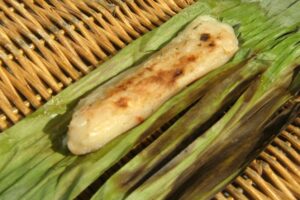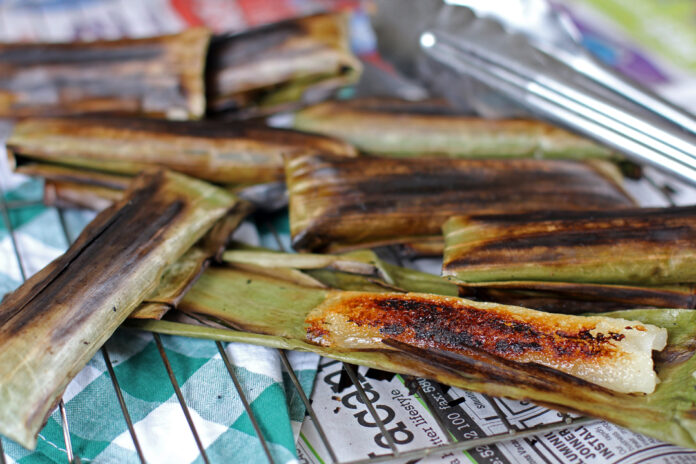Tupig, a traditional Filipino delicacy, holds a special place in the hearts and palates of those who have had the pleasure of tasting it. With its unique blend of flavors and cultural significance, tupig represents the essence of Filipino cuisine.
History and Origins of Tupig
The history of tupig can be traced back to the indigenous tribes of the Philippines, who first cultivated the staple ingredients used in its preparation. Over time, typing has evolved into a beloved snack enjoyed by people of all backgrounds, both in the Philippines and beyond.
Ingredients and Preparation of Tupig
Tupig is typically made from glutinous rice mixed with coconut milk, sugar, and grated coconut meat. This mixture is then wrapped in banana leaves and grilled over hot coals, resulting in a sweet and chewy treat with a hint of smokiness from the grill.
Variations of Tupig
While the basic ingredients of pig remain consistent, there are variations of this beloved snack found throughout the Philippines. Regional differences in ingredients and preparation methods give rise to unique flavors and textures, ensuring that no two pigs are exactly alike.
Tupig: A Culinary Tradition

In Filipino cuisine, typing is more than just a snack—it’s a culinary tradition that brings people together. Whether enjoyed as a midday treat or served as part of a festive meal, tupig is a staple of Filipino culture, often associated with joyous celebrations and social gatherings.
Health Benefits of Tupig
While typing may be indulgent, it also offers some surprising health benefits. Coconut, a key ingredient in tupig, is rich in fiber, vitamins, and minerals, making tupig a satisfying and nourishing snack option.
Tupig Around the World
Despite its origins in the Philippines, the pig has gained popularity around the world, with variations of the snack found in Filipino communities and beyond. In each culture, typing takes on unique characteristics, reflecting the diverse culinary traditions of its adoptive home.
Making Tupig at Home
For those looking to recreate the magic of typing in their kitchen, making typing at home is a rewarding endeavor. With just a few simple ingredients and a bit of patience, anyone can enjoy the delicious flavors of homemade typing.
Tupig: More Than Just a Snack

Beyond its culinary appeal, tubing holds deep cultural significance for the Filipino people. It’s a symbol of tradition and heritage, often shared among friends and loved ones during special occasions and everyday gatherings.
Tupig in Popular Culture
Tupig has also made its mark in popular culture, appearing in literature, film, and media as a symbol of Filipino identity and cuisine. From iconic scenes featuring tu-pig vendors to literary references extolling its virtues, tu-pig occupies a cherished place in the cultural landscape.
FAQs (Frequently Asked Questions)
- What does pig taste like?
Tupig has a sweet and chewy texture, with a subtle coconut flavor and a hint of smokiness from the grill. It’s satisfying and indulgent, perfect for satisfying a sweet tooth. - Can I make typing without a grill?
While traditional tu-pig is grilled over hot coals, you can also bake tu-pig in the oven or cook it on a stovetop grill pan for similar results. Just be sure to wrap the topic securely in banana leaves to preserve its flavor and texture. - Is tu-pig gluten-free?
Yes, tu-pig is typically made from glutinous rice, which is naturally gluten-free. However, it’s essential to check the ingredients and preparation methods, as some variations of tubing may contain gluten-containing additives. - Can I freeze the topic?
Yes, typing can be frozen for later enjoyment. Simply wrap the cooked pig tightly in plastic wrap or aluminum foil and store it in the freezer for up to several months. To reheat, simply thaw the topic and warm it in the oven or microwave until heated through. - What occasions are suitable for serving typing?
Tu-pig is perfect for any occasion, from casual gatherings to formal events. Whether enjoyed as a snack on the go or served as part of a festive feast, pig is sure to delight guests with its unique flavors and cultural significance.
Conclusion
In conclusion, typing is more than just a snack—it’s a symbol of Filipino culture and tradition. With its sweet and chewy texture, subtle coconut flavor, and a hint of smokiness from the grill, typing delights the senses and brings people together in celebration. Whether enjoyed as a special treat or shared with loved ones during festive occasions, pig represents the richness and diversity of Filipino cuisine.


